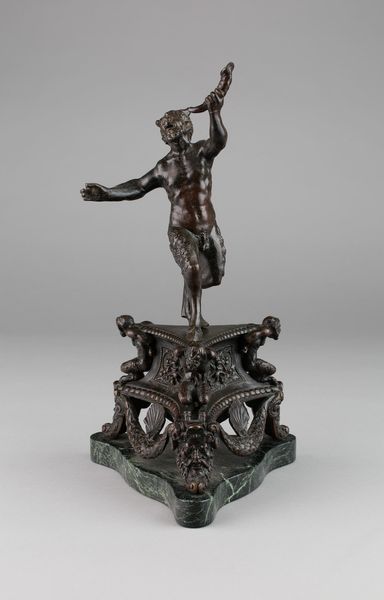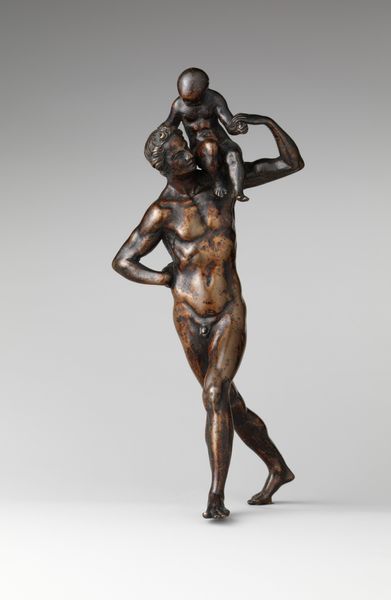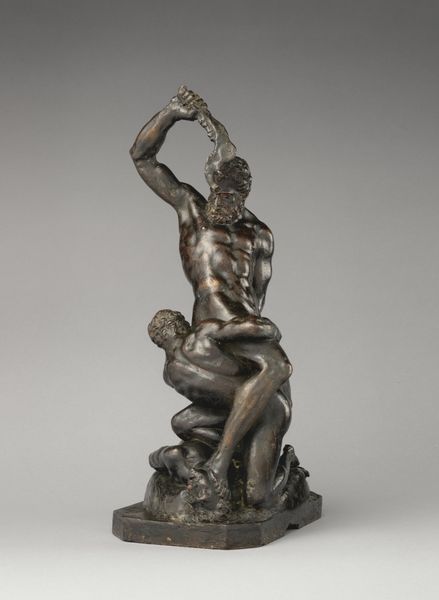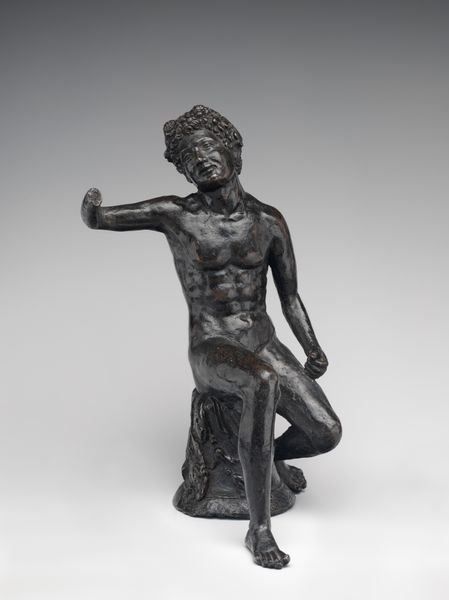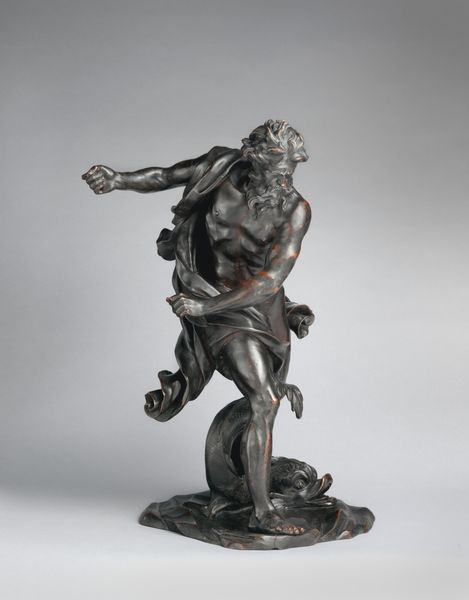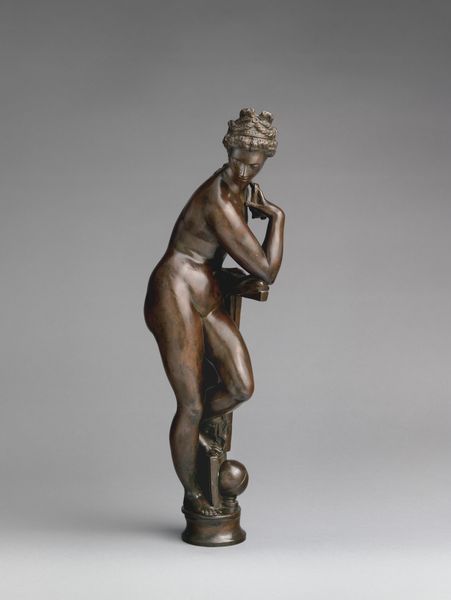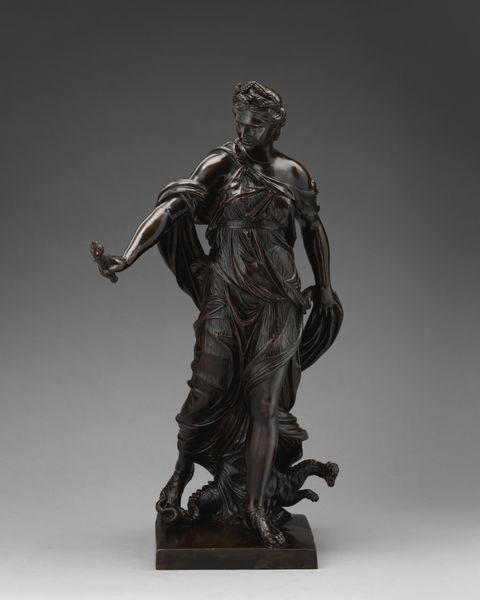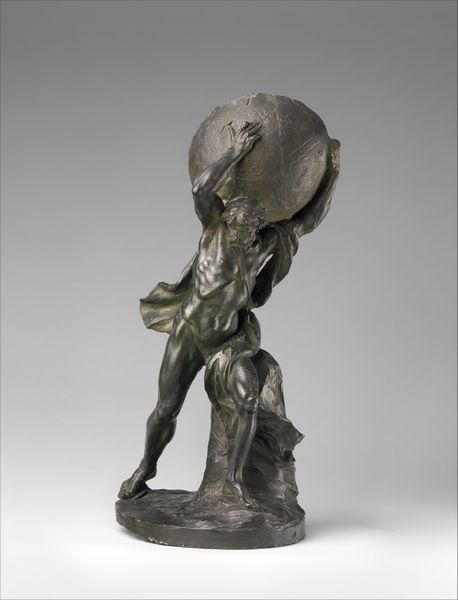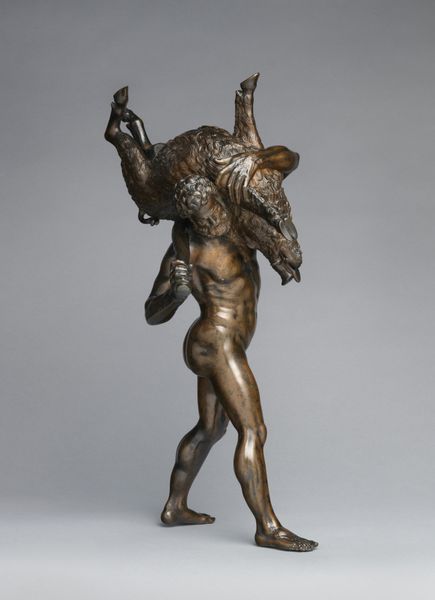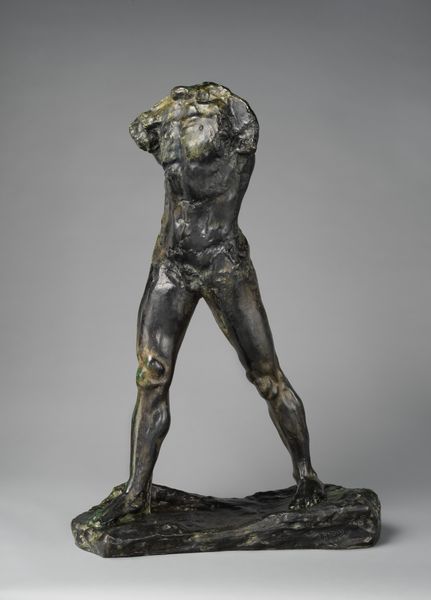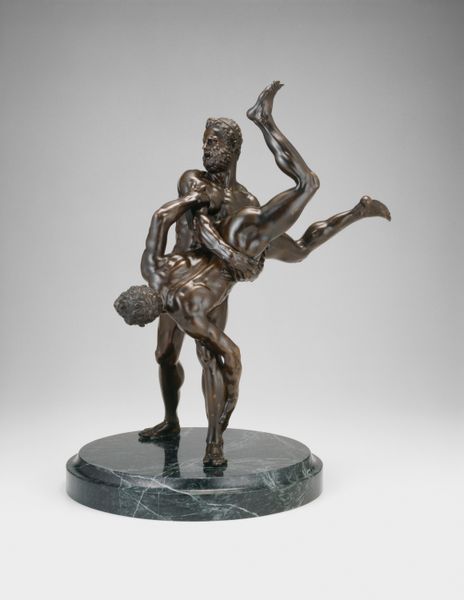
bronze, sculpture
#
allegory
#
sculpture
#
bronze
#
mannerism
#
figuration
#
sculpture
#
decorative-art
Dimensions: H. 9-5/8 in. (24.5 cm.)
Copyright: Public Domain
Curator: This intriguing sculpture, titled "Triton," was crafted by Niccolò Roccatagliata sometime between 1585 and 1615. It’s currently held in the collection of the Metropolitan Museum of Art. Bronze was Roccatagliata’s chosen medium here. Editor: My first impression is one of dynamic tension. The figure is poised, almost vibrating with potential energy, ready to unleash some kind of primordial sound. There’s a real sense of drama packed into such a relatively small piece. Curator: Absolutely. The Mannerist style certainly contributes to that feeling. Roccatagliata has played with the figure's anatomy, elongating and twisting it in ways that defy classical proportions, imbuing it with theatricality. The historical context also played a key role in the reception of sculptures like these. They were often acquired by noble families, reinforcing ideas of dynastic power, heritage and dominance through the ownership and public display of mythological allegories. Editor: I see exactly what you mean. The symbolism is overt: Triton, the son of Poseidon, using his conch shell to command the seas, a direct parallel to the owner's assumed mastery over their domain. I am also very interested in the way this symbol resonates today; the character, taken from mythology and seen so frequently, has lost none of its ability to stir the subconscious and invite dreams about a mythical primordial past. Curator: And that reception has been conditioned over time. Think about the environments in which these sculptures are encountered. Museums create meaning by giving viewers limited physical access, demanding specific standards of viewing in enclosed "white cube" spaces, reinforcing the historical dominance of the owning class. Editor: I would concur. This is a far cry from what Roccatagliata intended, where Triton was far less a spectacle and much more a symbol; in today’s context it’s harder to reconcile the symbolism and much easier to focus on the artistic elements. Curator: Very true! Thank you for your perspective on Triton. It underscores the multi-layered aspects of how we perceive and interpret art. Editor: It’s been a pleasure exploring these connections with you and this striking bronze figure.
Comments
No comments
Be the first to comment and join the conversation on the ultimate creative platform.


